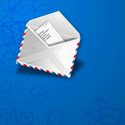“SPAM” Content to Avoid in Your Email Marketing Campaigns

Email marketers must compete not only against one another but against the spammers as well. As spammers have become more sophisticated, the technology used to detect and block spam has as well. That means that if you are not careful, your legitimate marketing message might never reach its intended recipients.
Understanding the words, images and subject lines that can trigger a spam alert is the best way to make sure your messages make it through the filters and reach the email boxes of your potential customers.
Subject Lines
The subject line is one of the most important parts of any email marketing message. A carefully crafted subject line gets the attention of viewers and increases open rates. A bad subject line can not only turn off potential buyers – it can cause your message to be labeled as spam. For instance, a blank subject line is always a red flag, as are the names of common medications like Viagra, Levitra and Xanax. Marketers should also use words like alert, assistance, response, proposal, assistance, warning, reply and debt with caution. These and similar words are often used by spaammers.
Other common subject line triggers for spam filters include: approved, at no cost, cheap and low rates. If you want to tell your readers about your inexpensive products, it is worth your while to look for alternatives to these frequently spammy words. There are plenty of ways to craft an effective subject line – the key is to be creative.
Email content
They say that content is king when it comes to email marketing, but perhaps the phrase should be changed to “quality content is king.” Modern spam filters look at not just subject lines but the content of the messages themselves.
Those filters have become quite sophisticated – going through the content line by line and looking for phrases that could indicate a spam message. If the filter determines your carefully crafted email marketingmessage is spam, it will go right to the junk folder. So, what to do? You can save your deliverability simply by avoiding all those known “spam” words and combinations of words like Money Back, Work at home, Winner and Dear Friend.
Coding
The quality of your coding is a determining factor when it comes to avoiding the dreaded spam filters. Spammers by definition prefer quantity to quality – churning out tens of thousands of messages as fast as possible. That means most spam messages include sloppy coding – and that sloppy coding is a big red flag to spam filters. When assessing your own message, be sure to review it for things like missing tags and other poor coding techniques. Reviewing your HTML coding carefully is one of the best ways to avoid having your messages end up in the junk mail folder.
Images
The types of images you use in your marketing messages are important as well. Spam filters read only content, so if they see a message that contains one large image and little text, they may assume that the message is spam. It is better to use several smaller images scattered in between large blocks of text than to rely on the power of a single image.
Keeping your messages out of the spam filter is essential to the success of your marketing campaign. You spend a lot of time, money and effort getting your message just right, and you want to make sure that message makes it to your customer.
Understanding the words, images and content that trigger spam filters is an essential part of the email marketing game – just as important as crafting the perfect subject line or finding the perfect picture.
Did you know that SendBlaster allows to check your spam score before sending your emails?


